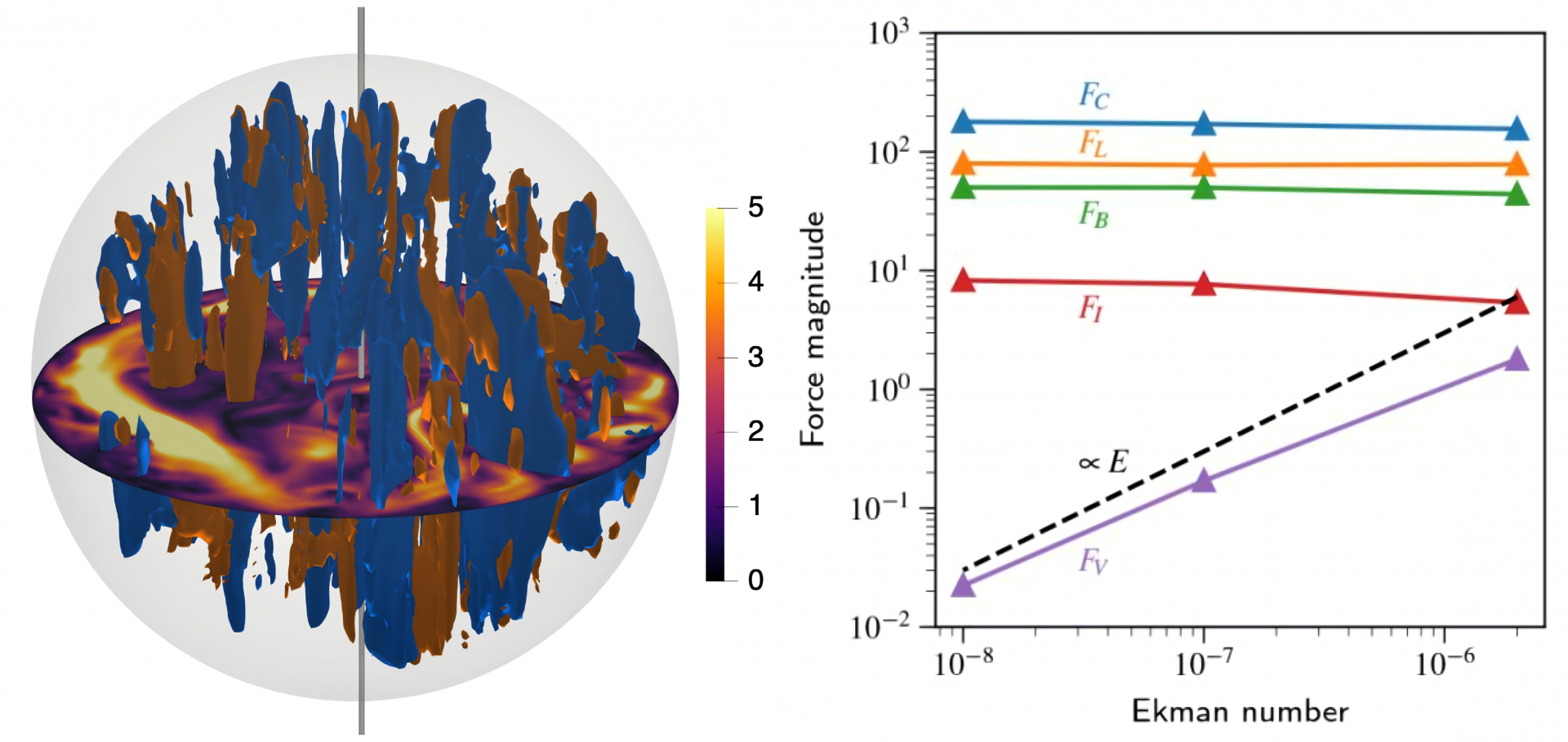Earth possesses a global magnetic field dominated by a dipole. This geomagnetic field shields the planet from high-energy solar wind particles and cosmic rays, playing a critical role in the evolution of Earth’s habitability. Ancient rock records of remanent magnetism indicate that the geomagnetic field has existed for at least 3.5 billion years.
The origin and evolution of Earth’s magnetic field are key scientific questions in Earth sciences and were listed as one of the 125 unresolved frontier scientific questions by Science journal. In 1919, British scientist Joseph Larmor proposed that the magnetic fields of the Sun and planets might be generated and maintained by magnetohydrodynamic dynamos within their conductive fluids. Today, dynamo theory is widely accepted as the explanation for Earth’s magnetic field, although the specific mechanisms of the geodynamo in Earth’s core remain unclear.

Associate Professor Yufeng Lin’s research team from the Department of Earth and Space Sciences at the Southern University of Science and Technology (SUSTech), in collaboration with international partners, has achieved significant progress in the theoretical understanding of the origin of Earth’s magnetic field. Their study reveals the invariance of geodynamo action with respect to the viscosity of Earth’s core fluid and discovered that an early-Earth model could generate a magnetic field structure and intensity highly similar to contemporary observations.
Their findings were published in the prestigious international journal Nature under the title “Invariance of Dynamo Action in an Early-Earth Model.”
Since the 1990s, with the advancement of high-performance computing, numerical simulations have become a key tool for studying Earth’s dynamo processes. In 1995, American scientists achieved the first three-dimensional self-sustaining dynamo simulation, successfully reproducing the main features of Earth’s magnetic field and geomagnetic reversals. Since then, international research teams have conducted simulations under various parameter conditions, laying an important foundation for understanding the geodynamo mechanism.
However, due to computational limitations, the fluid viscosities used in these simulations were much higher than those of Earth’s actual core. Additionally, most existing models are based on spherical shell model representing the structure of the present-day core, whereas paleomagnetic and thermal evolution studies suggest that Earth’s dynamo operated throughout the entire liquid core for most of geological history. Thus, the mechanisms of the geodynamo before the formation of the solid inner core and the resulting magnetic field structure remain unknown.
To address these issues, the research team developed a highly parallelized algorithm based on a fully spectral method, enabling efficient and accurate solutions to global three-dimensional nonlinear magnetohydrodynamic equations. Using this algorithm, they constructed a dynamo model applicable to the early Earth and performed the lowest-viscosity geodynamo simulations to date.
The study found that as fluid viscosity gradually decreased, the convective velocity, magnetic field strength, and spatial characteristic scales produced by the dynamo remained unchanged, indicating that viscous forces could be neglected under extremely low-viscosity conditions. This work, through direct numerical simulations, revealed the invariance of geodynamo action with respect to viscosity, asymptotically approaching the inviscid dynamo regime.

Figure 1. Variations in key output parameters of the geodynamo simulation with fluid viscosity
The researchers further analyzed the force balance relationships in the extremely low-viscosity dynamo model. The results showed that the dominant Coriolis force resutling in the formation of columnar convective structures along the rotation axis. The Lorentz force was generally comparable in magnitude but could surpass the Coriolis force in regions with strong magnetic fields, disrupting local columnar structures. Quantitative analysis of the axial torque of the Lorentz force demonstrated that the model approximately satisfied the theoretical constraints proposed by J. B. Taylor in 1963, which ignored viscous forces, further validating that the numerical model achieved an inviscid dynamo regime.

Figure 2. Convective structures and force balance analysis in the dynamo model
The team also compared the simulation results with geomagnetic observational data. Key parameters such as the axial dipole moment, dipole/non-dipole ratio, and magnetic energy spectrum were used for quantitative analysis. The analysis showed that the magnetic field characteristics produced by the early-Earth model aligned well with Precambrian paleomagnetic records and could also reproduce a geomagnetic field structure and intensity similar to contemporary observations. This discovery suggests that Earth’s dynamo can maintain a stable, axial dipole-dominated magnetic field over billions of years, providing an important theoretical basis for reconstructing ancient magnetic fields and understanding the long-term evolution of Earth’s magnetic field.

Figure 3. Comparison of simulation results with paleomagnetic records and contemporary geomagnetic observations
Through the development of advanced numerical algorithms and large-scale simulations, this study has revealed the invariance of geodynamo processes with respect to fluid viscosity, achieved an inviscid dynamo regime approaching realistic core conditions, and demonstrated that an early-Earth model could generate a magnetic field structure and intensity highly similar to contemporary observations. The findings provide important insights into understanding the origin and long-term evolution of Earth’s magnetic field.
Associate Professor Yufeng Lin is the first and corresponding author of the paper. Other collaborators include Dr. Philippe Marti and Professor Andrew Jackson from ETH Zurich.
Paper link: https://www.nature.com/articles/s41586-025-09334-y
To read all stories about SUSTech science, subscribe to the monthly SUSTech Newsletter.
Proofread ByAdrian Cremin, Yifei REN
Photo ByDepartment of Earth and Space Sciences